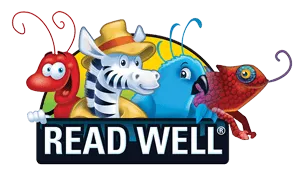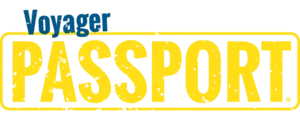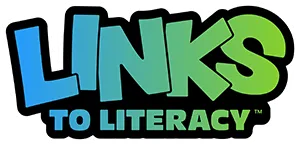What Are High-Frequency Words and Why Are They Significant?
High-frequency words are those that occur frequently in written and spoken language, making them foundational for learning how to read and write. Knowing high-frequency words allows students to improve their literacy skills, build vocabulary, and strengthen their ability to take standardized tests. In this article, six strategies are highlighted for teaching high-frequency words as well as how to overcome any challenges that occur when doing so.
High-frequency words serve as building blocks of language and are essential for fostering reading comprehension, writing proficiency, and overall communication skills. Mastering high-frequency words equips students with the fundamental vocabulary needed to understand complex texts, express their thoughts coherently, and engage effectively in various academic disciplines.
Prioritizing these words lays the groundwork for students to become proficient and confident communicators, impacting their academic success and lifelong learning journey. This article provides educators with a clear definition of high-frequency words, explores their significance in language and literacy instruction, and provides resources to support students and teachers in their learning and teaching.
Definition of High-Frequency Words
High-frequency words are commonly occurring words in written and spoken language. They are often referred to as sight words and used frequently in written texts such as books, articles, and other literary materials. They are foundational to literacy and language development. These words are fundamental for effective reading and writing skills among preschool-age students and older. High-frequency word lists for preschool will include common words like "the," "and," "is," "it," and "was." The idea or goal of sight words is that students come to recognize them by sight to help fluency.
Additionally, mastering high-frequency words is crucial for reading comprehension and overall language proficiency. This is why high-frequency word instruction begins at a young age. With Voyager Sopris Learning’s Read Well® program, K–3 students are given a clear path to reading comprehension, mastery, and academic success through targeted, research-based instruction. For example, Read Well introduces high-frequency sounds first, allowing students to decode more words earlier.
The Significance of High-Frequency Words
Studies reveal that roughly 300 words account for about 65 percent of written materials, highlighting the pivotal role of high-frequency words. Early instruction that lacks sufficient emphasis on these words may hinder students' ability to develop essential reading skills, including fluency and comprehension. Neglecting this fundamental aspect may result in challenges when students attempt to express themselves, both in written assignments and verbal communication. Here's a breakdown of how these words affect different areas:
Reading Skills: High-frequency words are a cornerstone for reading-comprehension skills. Recognizing these words quickly can aid in fluency and understanding. When students can identify high-frequency words at a glance, it allows them to focus more on the overall meaning and context of the text rather than spending time decoding each word. If students lack a solid foundation in basic reading skills like word recognition and language comprehension, they may require reading intervention. Acadience® Reading Survey is useful for predicting early reading success levels and helping students struggling with acquiring basic early literacy skills.
Early Literacy: High-frequency word proficiency in early literacy development enables young readers to feel confident while reading and enjoy it. Learning common words helps children by building a solid reading foundation for literacy skills. The science of reading is a body of growing research that shows how important language comprehension and word recognition are in early literacy. For example, Scarborough’s Reading Rope uses the metaphor of a rope to show how the increasingly strategic elements of language comprehension weave together with the increasingly automatic skills of word recognition to produce skilled reading.
Vocabulary Building: High-frequency words form a substantial portion of a student’s vocabulary. Mastering these words can boost overall language proficiency because high-frequency words are a large portion of both academic texts and everyday language. By internalizing a base layer of common words, students can focus on building upon that layer of vocabulary and learn complex vocabulary with more ease.
Writing and Communication: High-frequency words are also vital for effective writing and communication. Using these words appropriately enhances the readability of student writing and clarity of oral communication. As students become better readers, they become better writers. And as students become better writers, they become better communicators. The reading, writing, and speaking cycle continuously builds upon itself—and that cycle can often be started with the simple acquisition of high-frequency words.
Language Learning: Because high-frequency words and sight words are so important in reading, writing, and speaking skills, they often are a core focus of many language-acquisition programs. High-frequency words are important in teaching both native English speakers and English language learners. Fluency development must hold a significant place for creative and engaging approaches to teaching language learners. For example, according to the National Clearinghouse for English Language Acquisition, one language-acquisition program called Project ELEVATE (Ensuring Learning for ELs by Valuing Family Engagement and Teacher Effectiveness) taught educators “how to provide high-quality linguistic input by pre-teaching key vocabulary and language concepts, as well as using nonlinguistic representations to support the acquisition of new language concepts.”
Standardized Tests: As students advance in grades, the foundational knowledge of high-frequency words can have a strong impact on standardized test scores. High-frequency words frequently appear in standardized tests like the SAT, GRE, and TOEFL. Proficiency in these words allows students to swiftly recognize, understand, and respond to vocabulary questions, thereby enhancing their ability to comprehend and answer these sections with accuracy.
Solution-Oriented Approach
Navigating high-frequency word instruction can present challenges for educators. In this section, common obstacles will be outlined and actionable solutions provided, empowering teachers with effective strategies to enhance students' language skills.
Engagement: The repetitive nature of learning high-frequency words is crucial for mastery, but has the potential to lead to disinterest or boredom since some learners might find it monotonous to repeatedly practice or review the same words. In addition, students with different learning styles or needs might struggle with traditional rote learning techniques. To solve this, educators can encourage peer collaboration, where students work together on word-related projects or games. Methods like this that keep students interested, engaged, and motivated are crucial when teaching high-frequency words.
Retention: The vast amount of high-frequency words can sometimes negatively affect retention because memorizing a large set of words can be overwhelming for some. Implementing spaced repetition techniques and gradually increasing the time between reviewing words can help. Also, if the words are presented in isolation without contextual meaning or connections, then retention becomes even more challenging. Therefore, teaching the words in relation to what students are reading and experiencing can also help them internalize and retain these words in a more meaningful way.
Diverse Proficiency Levels: It is no surprise to educators when students have varying levels of prior knowledge and exposure to certain high-frequency words. Students who already know many words may disengage with instruction, while those who are struggling may feel overwhelmed. Tailoring instruction to meet the needs of advanced and struggling learners can be challenging. Some students may likely need additional support, such as small-group instruction or one-on-one sessions. Providing additional resources, offering personalized intervention, and using flexible teaching strategies are all positive approaches to teaching diverse proficiency levels.
Language Diversity: High-frequency words in English may not always align with the primary language or dialect spoken at home for many students. Acknowledging and respecting a student’s background language while also providing bilingual resources and materials for students who are non-native English speakers can help them bridge the gap between their native language and English. Some of these resources and materials may include using cognates or words with similar roots in both languages.
Limited Instructional Time: In a curriculum packed with various subjects and learning objectives, educators often face time constraints, making it challenging to allocate sufficient time for comprehensive high-frequency word instruction. Incorporating these words into various activities and lessons can help provide students with consistent exposure and practice. Also, integrating word instruction into other subjects, such as science or social studies, by incorporating relevant vocabulary can provide a cross-curricular solution.
Resource Constraints: Schools often have limited access to diverse and effective educational resources. Inadequate resources can hinder the variety and depth of instructions. Educators must leverage available resources creatively and collaborate with colleagues to share resources. Teachers can also explore a variety of online teaching resources, academic communities, and open-source materials for useful resources such as word lists, worksheets, printables, and interactive activities. For example, Voyager Sopris Learning® strives to provide teachers with helpful resources for instruction and intervention for a variety of learning, such as targeted instruction that includes high-frequency words at the early literacy level or intensive literacy intervention for adolescents.
Strategies for Teaching Effective High-Frequency Words
Teaching high-frequency words effectively involves employing a range of actionable strategies to cater to diverse learning styles and abilities. By using these strategies, educators can implement effective teaching of high-frequency words, but they can also set a strong foundation for future reading activities that will increase fluency. According to Jerry L. Johns and Kristine H. Wilke in their article High-Frequency Words: Some Ways To Teach And Help Students Practice And Learn Them, “A list of 100-200 high-frequency words will make up over 50 percent of the words in school texts.” Consistent exposure to these words through various engaging activities, games, and exercises not only aids in recognition but also fosters fluency and reading comprehension. Here’s a closer look at some of the best strategies:
Contextual Learning
One of the most important strategies educators can use to teach high-frequency words is to highlight them within sentences and stories. This approach helps students understand word usage and meaning in reading and writing, rather than just an act of rote memorization. Contextual learning not only aids in vocabulary acquisition but also cultivates critical thinking skills, as students decode and infer meaning from the context. Through exposure to high-frequency words in real-world applications, students comprehend their function and meaning in various contexts, enabling them to later grasp more complex subtleties like multiple meanings, idiomatic expressions, or the diverse use of a word across different texts.
Flashcards and Repetition
According to the National Reading Panel, “One trend that was strongly reflected in the database was that high-frequency and multiple, repeated exposures to vocabulary material are important for learning gains.” Using flashcards is one of the easiest ways to do that. Flashcards not only offer repetition and review, but they are also a great way to incorporate a simple visual and kinesthetic element into what is often a basic list of words. They are versatile and can be used in a variety of ways, such as simple word recognition, more complex games, or even as visual blocks on a word wall.
Phonics Integration
It is recommended to integrate phonics instruction into high-frequency word lessons when appropriate and relevant. While high-frequency words provide a foundation for fluent reading and comprehension, combining this approach with phonics instruction enhances a student's ability to decode and understand words. Phonics instruction helps students grasp the relationship between letters and sounds, enabling them to not only recognize high-frequency words by sight but also decode unfamiliar words encountered in their reading. By understanding the phonetic patterns and rules, students can expand their reading capabilities, becoming more independent readers and further solidifying their overall literacy skills. The combination of high-frequency word recognition with phonics instruction creates a strategy that equips students with the tools to navigate decodable words and decodable texts with confidence and comprehension.
Word Games and Activities
One key approach is using multisensory techniques that engage learners in activities involving sight, sound, touch, and movement. Educators can provide students with a variety of word games and activities, such as word bingo, word scavenger hunts, memory games, and crossword puzzles. Word bingo can encourage active participation and word associations. A word scavenger hunt encourages exploration and discovery, making the learning process adventurous and immersive. While memory games are an interactive way to practice the skill of recognition and recall, crossword puzzles can stimulate critical thinking and problem-solving skills.
High-Frequency Word Lists
Educators can equip students with the fundamental tools for language proficiency by providing curated lists of high-frequency words tailored to their grade level. These lists enable students to recognize, understand, and effectively use commonly occurring words. Regular practice with word lists is paramount for reinforcing retention and mastery.
Some of the most recognized lists include the Fry Word List and the Dolch Word List. The Fry Word List, created by Dr. Edward B. Fry, is a compilation of 1,000 of the most frequently used English words. These words are arranged in order of frequency, with the most frequently used words appearing at the beginning of the list. The Dolch Word List, developed by Dr. Edward William Dolch, is a smaller compilation of high-frequency words focused on words commonly found in children’s literature. This list consists of 220 words that are usually categorized into different levels based on their frequency and appropriateness for early readers. These levels are often arranged into pre-primer, primer, first-grade, second-grade, and third-grade levels.
Word Journals
Students can maintain word journals where they record high-frequency words encountered during reading or classroom activities. This practice reinforces retention and understanding while giving students a sense of autonomy and independence in their own learning. Teachers can also encourage students to use their word journals at home to establish a bridge between school and home learning. This collaborative effort will cultivate a supportive environment for continuous language development, setting students on a path toward enhanced reading, writing, and overall academic success.
Conclusion
High-frequency words have significance in K–12 education. That's why Voyager Sopris Learning emphasizes targeted instruction for high-frequency words in education solutions. For students in grades K–5, there is Voyager Passport®, a research-proven intervention solution. Additionally, the intensive literacy intervention for struggling students in grades 5–12, LANGUAGE! Live®, addresses the importance of these words. Whether an educator needs evidence-based intervention or trusted formative assessment, Voyager Sopris Learning is dedicated to providing solutions for reading, writing, and math.


